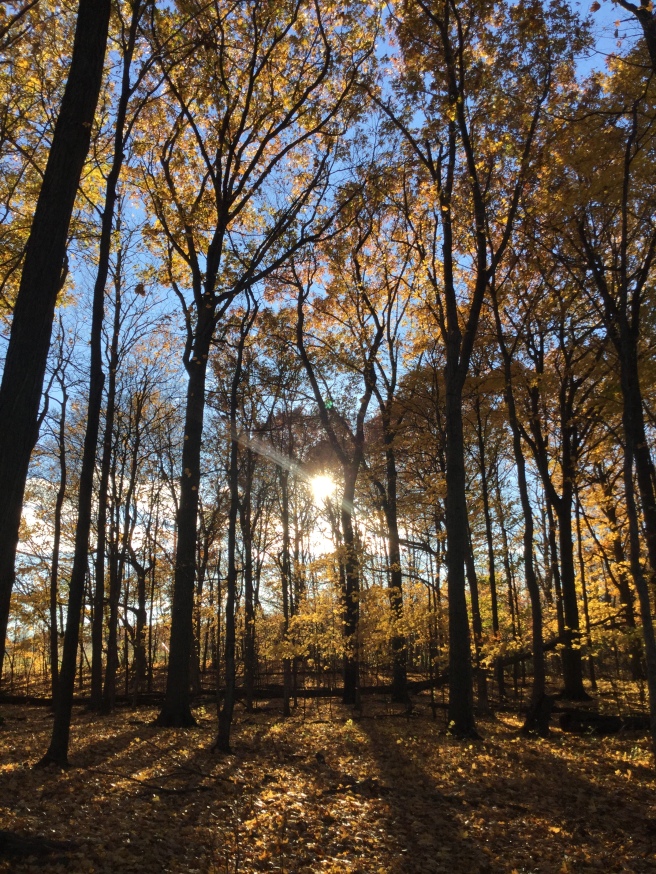*The historical background provided on the Niagara Escarpment Biosphere Reserve (2nd and 3rd paragraph) is adapted from a research paper written (by me) for a Masters of Sustainability Science course at Brock University.

Not sure what a UNESCO Biosphere Reserve is? Don’t worry, neither did I. I thought maybe today I’d tell you a bit about them and give you a quick overview of the Niagara Escarpment Biosphere Reserve. I had heard the term biosphere reserve referenced quite a few times but I wasn’t really sure what it meant. I work full-time and am completing a Masters at a university located within a UNESCO Biosphere Reserve, but to be honest I still wasn’t completely sure what all it entailed. If you live in the Niagara Region you may have seen signs along the QEW that say “You are entering a UNESCO Biosphere Reserve.” Have you ever wondered what that means? If so, you’ll want to read on!
So here it goes, a quick historical overview…
In 1971 UNESCO’s Man and the Biosphere (MAB) program was launched and it was under this program that the concept of biosphere reserves originated. Ishwaran, Persic, and Nguyen (2008) chronicle the evolution of biosphere reserves and explain that a major shift occurred in 1984 with the UNESCO Action Plan for Biosphere Reserves. UNESCO (2016a) biosphere reserves are meant to achieve three interconnected functions which are: conservation, development, and logistical support. The ideas surrounding the functionality of reserves emerged in research throughout the 1980s when this Action Plan began to be interpreted by stakeholders and UNESCO Member States. It was Batisse (1986) who first claimed biosphere reserves were meant to serve the three functions as outlined above.
The Niagara Escarpment became a designated UNESCO Biosphere Reserve in 1990, which makes it part of the second generations of biosphere reserves. The Niagara Escarpment Biosphere Reserve (NEBR) stretches 725 kilometers from Lake Ontario, near Niagara Falls, to the tip of the Bruce Peninsula, between Georgian Bay and Lake Huron. Overall, it covers 194,555 hectares of land and the core of the reserve consists of 66,163 hectares. The NEBR covers eight regions and 21 local municipalities and there are two major biomes located within this reserve (UNESCO, 2015). If you live anywhere near the Niagara Escarpment then you may actually live in the core zone of the biosphere reserve, how cool is that?
The NEBR is really unique in that there are people living, working, and participating in leisure activities within the biosphere reserve. At the NEBR designation ceremony Dr. Federico Mayor, the UNESCO Secretary at the time, stated, “the protection of this complex landscape within a rapidly urbanizing region is a tremendous feat of coordination, requiring leadership, hard work, imagination, tenacity, and a good dose of human psychology” (Queen’s Printer for Ontario, 2016b, pp. 12). I couldn’t agree more with Dr. Mayro and there multiple groups within the NEBR doing amazing work, everything from land trust management to education. A few groups and organizations that are working towards conservation and the implementation of sustainable practices within the NEBR include the following:
- Escarpment Biosphere Conservancy
- Bruce Trail Conservancy
- Giant’s Rib Escarpment Education Network
- Niagara Escarpment Commission – operates as an arms length organization of the Ontario Government and ensures that development on the Niagara Escarpment is “compatible with” the natural environment by adhering to the Niagara Escarpment Planning and Development Act, developed in 1973 (Queen’s Printer for Ontario, 2016a).
Over the years many have pushed for additional lands to be added to the NEBR but there has been public pushback (Gowan, 2016) and this has to do with the fact that development on designated lands seems to go through a more rigorous evaluation processes and often times ends up being denied because of the mandate of the Niagara Escarpment Commission. Many of the conservation groups working in the NEBR believe that their biggest challenge is lack of community support and cite lack of public knowledge regarding the designation of the NEBR as the main reason why (Nasswetter, 2004).
Before October of this past year, I was one of those individuals who lacked knowledge in regards to what the NEBR was and why this designation is important, and deserves to acknowledged within the Niagara Region. I guess that I’m writing this post to try and raise awareness about the NEBR in an effort to encourage sustainable practices within the Niagara Region because we have something really special here and I’m not sure we really appreciate that on a daily basis.
Have you explored any of the greenspaces in and around the Niagara Escarpment with your family? Here is a list of a few of our favourite places.
References Batisse, M. (1986). Developing and focusing the biosphere reserve concept. Nature and Resources, 22(3), 1−12. Escarpment Biosphere Conservancy (2016). About Us. Retrieved from http://escarpment.ca/about-us/ Gowan, Rob. (2016, October 27). NEC comment deadline nears. Owen Sound Suntimes. Retrieved from http://www.owensoundsuntimes.com/ Ishwaran, N., A. Persic and N.H. Tri. (2008). Concept and practice: the case of UNESCO Biosphere Reserves. International Journal of Environment and Sustainable Development 7: 118-131. Naswetter, Katie. (2004). Balancing Act: Local conservation efforts on the Niagara Escarpment Biosphere Reserve. UMI Dissertation Services. Queen’s Printer for Ontario (2016a). Ontario’s Niagara Escarpment, About the Commission. Retrieved from http://www.escarpment.org/commission/about/index.php Queen’s Printer for Ontario (2016b). Ontario’s Niagara Escarpment, UNESCO Biosphere Reserve Designation. Retrieved from http://www.escarpment.org/ biosphere/designation/index.php Smits, A. (2016). Operationalizing sustainability science: A critical assessment of the Niagara Escarpment UNESCO Biosphere Reserve. Unpublished work. Brock University, St. Catharines, Ontario. United Nations Educational, Scientific and Cultural Organization (UNESCO) (2016). Ecological sciences for sustainable development, Main characteristics of biosphere reserves. Retrieved from http://www.unesco.org/new/en/natural-sciences/ environment/ecological-sciences/biosphere-reserves/main-characteristics/ United Nations Educational, Scientific and Cultural Organization (UNESCO) (2015). Ecological sciences for sustainable development, Niagara Escarpment. Retrieved from http://www.unesco.org/new/en/natural-sciences/environment/ecological- sciences/biosphere-reserves/europe-north-america/canada/niagara-escarpment/